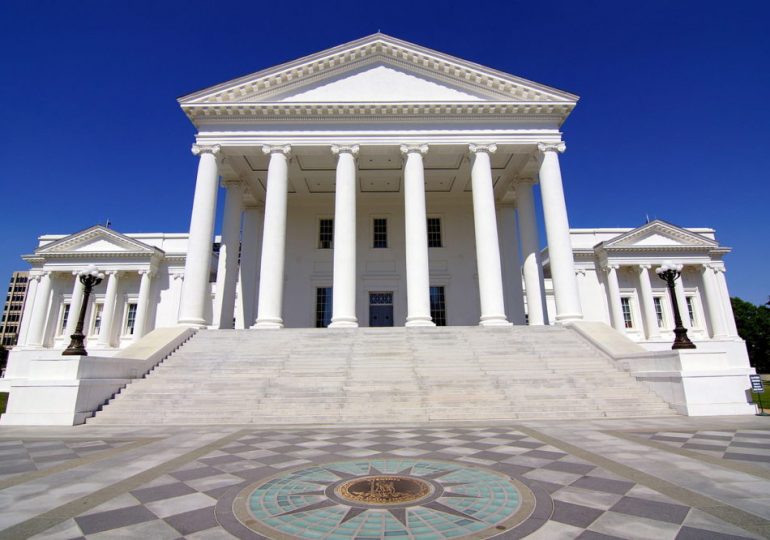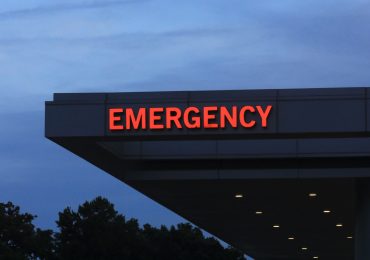Virginia energy efficiency advocates anticipate a new state law will broaden and deepen energy-saving programs the state’s two largest utilities offer to customers.
The Savings Achieved Via Efficiency (SAVE) Act (SB 565/HB 746) officially became a law on April 17 during a one-day reconvened session in Richmond to consider bills the governor had amended or vetoed after the General Assembly wrapped up business in early March.
The legislation strengthens energy efficiency standards that were set to expire next year. It also renews the authority of the State Corporation Commission to approve energy efficiency programs for Dominion Energy and Appalachian Power.
The linchpin, however, is a provision directing utility regulators to develop a single, consistent test to measure the cost effectiveness of any proposed efficiency program, which can range from energy audits to weatherization upgrades to appliance rebates. Advocates called that addition a “big win.”
Republican Gov. Glenn Youngkin left that language in place but amended the bill to require regulators to also use a second test, one that’s already in existence, to evaluate any proposed efficiency programs.
Both chambers greenlighted the amended bill — the House of Delegates tally was 92-5 and the Senate’s was 37-3 — rather than risk a veto by Youngkin.
Chelsea Harnish, executive director of the Richmond-based Virginia Energy Efficiency Council, said that even with Youngkin’s amendment, the version of SAVE that emerged will boost transparency of the cost and effectiveness of both utilities’ programs.
Proponents had learned about the amendment early this month, she said.
“We are aware it’s a compromise,” Harnish said about treating the change as a speed bump instead of a roadblock. “We decided that’s something we could live with.”
Bill revamped early on
As originally proposed by legislators in January, the SAVE Act would have created what’s called a minimum achievable floor target for each new efficiency standard. In other words, utilities would have had to meet annual savings targets scheduled to increase incrementally.
However, that language was stripped from the bill to assuage pushback from Dominion Energy and to gain bipartisan support in the House.
“That change was actually a bigger blow than the governor’s later addition,” said Mel Mackin, interim director of state policy at Ceres. “The minimum standards would have been helpful because it would have put a cost-effectiveness test in place.”
Still, even without that floor, Mackin said she is optimistic that incremental savings targets will emerge annually.
“Energy efficiency is a no-brainer for keeping costs low and minimizing waste,” she said. “It’s also a critical piece in decarbonizing the electric-power sector.”
Ceres is an advocacy organization that collaborates with the business sector to accelerate the transition to a cleaner economy. The Boston-based nonprofit had sent letters of support for the SAVE Act signed by companies such as IKEA Retail U.S., eBay Inc., Akamai Technologies and New Belgium Brewing to the governor and legislators.
The SAVE Act was a top priority for many major businesses in Virginia because energy efficiency is critical to reducing strain on the electric grid, cutting pollution and lowering utility costs for ratepayers, Mackin said.
Dominion did not respond to a request for comment.
Regulators will debut the new test in September 2025 so utilities will have plenty of time to roll out efficiency programs that comply. To design the test, they will draw on recommendations from the National Standard Practice Manual, a document devised by energy efficiency experts across the country.
What’s crucial is that the manual is an objective, technology-neutral reference tool for assessing energy efficiency investments based on eight guiding principles, Harnish said.
For advocates, the top three of those principles include the leeway to evaluate proposed energy efficiency programs by how well they align with climate goals laid out in the state’s Clean Economy Act, balance both the costs and benefits, and ensure transparency.
“Too often, utilities are putting in way more cost than benefit,” Harnish said, adding that stakeholders need to be able to review and comment on the methodologies and results of any cost-benefit analysis.
All Southeast states except Tennessee are moving toward tests that incorporate principles from the National Standard Practice Manual, she added.
SAVE start delayed until 2029
The SAVE Act’s full impact won’t kick in until 2029, even though it goes into effect this summer.
That’s because the State Corporation Commission caught lawmakers and advocates off guard by opening a docket in early January — just days before the legislative session began — to begin reviewing efficiency programs Dominion and Appalachian Power will offer for the three-year cycle beginning in 2026.
“The General Assembly looks down on trying to legislate during an open regulatory process,” Harnish said about the decision to drop 2026-28 from the realm of the SAVE Act. “We had been under the impression that docket wouldn’t be open until much later this year.”
When the new test is deployed in 2029, it will be paired with an existing test that Youngkin required with his SAVE Act amendment.
“At least he picked one of the better tests,” Harnish said. “That’s something we decided we could live with.”
Before the SAVE Act passed, Virginia law stated that regulators had to approve any efficiency program that passed three out of four cost-benefit tests.
For years, advocates have maintained that those tests — among the handful developed in California in the 1980s — are outdated ways to measure the worth of a program.
“Our issue is that they’re not transparent because you don’t know what the inputs are,” Harnish said. “When people started to analyze them, they realized that test results could look one way in Connecticut and another way in Arkansas.
“That’s what we wanted to fix with the SAVE Act.”
Another bonus folded into the new law that Youngkin didn’t touch is a measure requiring regulators to conduct studies every three years to discover where utilities are falling short with energy efficiency in their respective territories.
“There is scientific research showing utilities what they can do,” Harnish said. “The key is to find out how much in energy savings remains to be achieved among their customers.”
Under the 2020 Virginia Clean Economy Act, Dominion was required to meet energy savings reductions of 5% between 2022 and 2025. Appalachian Power, with a majority of its customers in Southwest Virginia, was directed to follow suit with a 2% reduction. The baseline for both investor-owned utilities was 2019 electricity sales.
Appalachian Power is projected to meet all of those goals, according to numbers submitted to utility regulators. It’s a different story at Dominion, which is expected to miss all of its goals or achieve only half of them. The outcome depends on whether regulators base calculations of savings on a net or gross level.
Combining the new cost-benefit test with an independent study “keeps Virginia on a path to continue to establish ambitious but achievable standards aligned with best industry practices,” said Mackin, of Ceres.
As well, she added, it’s the lowest-cost way to curb emissions of the heat-trapping gases causing climate change — which is what compelled The Nature Conservancy to back the SAVE Act.
Minimizing energy use is a key to protecting biological diversity, said Lena Lewis, the conservancy’s energy and climate manager in Virginia.
“The more we reduce energy demand, the less pollution we have,” she said, “and the easier it is to meet that smaller demand with clean, carbon-free renewable energy.”
Virginia lawmakers reached a compromise on energy efficiency – here’s what it will mean for utilities and regulators is an article from Energy News Network, a nonprofit news service covering the clean energy transition. If you would like to support us please make a donation.
Leave a comment





